
If you haven’t bought a hot tub before chances are that you are pretty much in the dark as to how much a hot tub costs. This isn’t helped by the fact that a large number of hot tub manufacturers and retailers tend not to put prices on their websites. This isn’t a deliberate ploy to confuse customers (despite what you might think) but is generally because the price of a hot tub will vary considerably depending upon the specification and the location of the dealer. Particularly at the higher end of the hot tub market, hot tubs can be highly customized making it difficult to provide an accurate “off the peg” price. Add to this the considerable cost of transporting and delivering hot tubs to both retailers and customers in different locales and you will see how it can become difficult for hot tub manufacturers, many of whom ship hot tubs around the world, to give comprehensive and accurate pricing information.
So, how much does a hot tub cost to buy? Basic inflatable hot tubs can be bought for around $300. Entry level hard shell hot tubs cost around $3000 to $5,000. Mid-range hot tubs vary in price from between $4,000 and $8,000 and premium hot tubs cost between $6,000 and $10,000. Top end, luxury hot tubs can be bought from between $10,000 and $20,000.
Most new hot tub customers tend to take a stab in the dark and guess that a hot tub will cost around $5,000. As you can see from above, unfortunately, $5,000 only really gets you to the top of entry-level or the lower part of the mid-range of hot tubs available. In the end, and for a number of important reasons that we will come to, a majority of hot tub customers spend somewhere between $7,000 and $12,000 and buy a hot tub from the upper part of the mid-range or from the premium range.
If you are thinking of getting a hot tub then it’s important to realise that the actual purchase price is only one part of the equation. You will also need to factor in installation costs as well as the ongoing running costs of keeping the hot tub going. We will get to those in a little while but first of all, let’s have a look at the different price ranges of hot tubs that are available and what you can expect to pay and get for your money at each level.
Hot tub price levels
Use these price levels as a guide. Once you have started looking into hot tub pricing in your area in more detail you will be able to work out more exactly where the prices for the different levels are. You will find that the specifications and descriptions for each level are accurate but that the pricing might just vary a little.
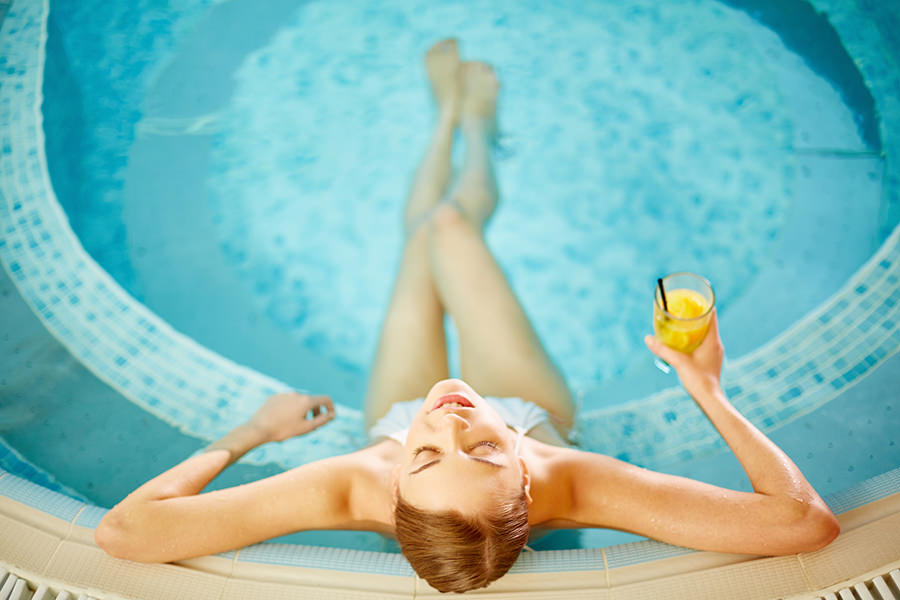
$300 Inflatable hot tubs
At the very lowest price level, it’s possible to purchase an inflatable hot tub for as little as $300. Inflatables have the massive advantage of not needing any installation and you can be up and running really quickly once you have bought your hot tub. They also provide a reasonably good basic hot tub experience. Bear in mind that an inflatable hot tub generally doesn’t have any seating in it and doesn’t really provide a hydrotherapy experience. Inflatable hot tubs do have air jets but they just produce a gentle bubbling rather than the powerful jet of water you get from more expensive hot tubs. Even the most basic hard shell hot tub will have stronger and more adjustable jets and some form of seating so will be considerably more comfortable.
However, inflatable hot tubs
When they are working all the reviewers of inflatable hot tubs are thrilled with how good they are and what fantastic value for money they offer. You just need to balance this up against the fact that they don’t last particularly long, can cost more to run on a monthly basis and can’t be used all year round like a hard shell hot tub can be.
$3K – $5k Entry level hot tubs
Hot tubs at this level are going to offer a basic, no-frills hot tubbing experience at a price that makes it relatively easy to get into. The drawbacks at this price level are that
Entry level hot tubs Tend to have rotationally molded shells which means that they look like dull plastic
You will probably also find that the filtration system is much less effective than on a higher model meaning that you will need to add more chemicals more frequently and carry out cleaning and water changes on a more regular basis. Bear in mind that over time the higher running costs per month do add up. In
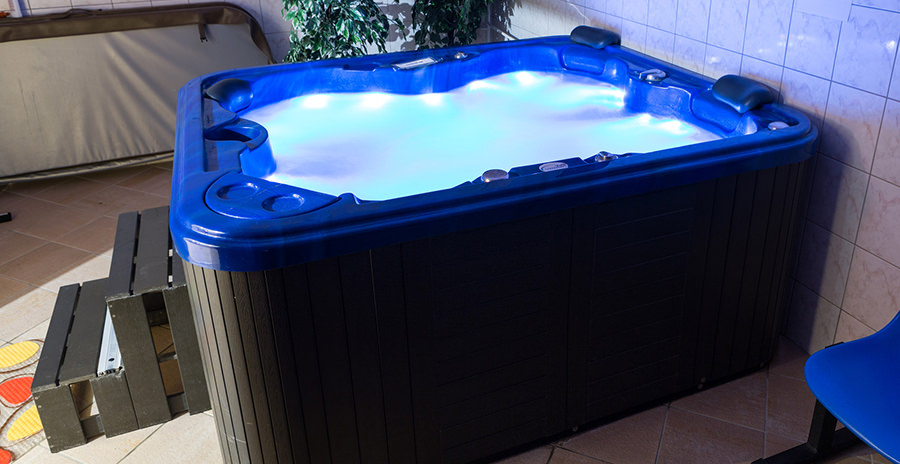
$4k – $8K Mid range hot tubs
In this range you can expect to have a full acrylic shell and for the hot tub cabinet to be made of wood or similar material. The hot tub will have a number of jets and different exciting and fun features and will offer a level of comfort and user experience significantly higher than in the budget range above. You should also have the comfort of knowing that your hot tub was made by a
Despite
If you buy a budget entry level hot tub at least you know what you are getting and to a certain extent these offer a great deal of bang for your buck. The chances are that you won’t be too disappointed if it doesn’t last for two decades or if it costs you a bit more per month in running costs. Similarly, if you spend a bit more and go for a premium level hot tub you would get much better quality workmanship. You would be buying a hot tub that should last a significantly long time and most importantly a hot tub that is efficient and has low monthly running costs. The mid-range hot tubs are literally stuck in the middle of these two areas and, if you are unlucky, you could end up paying more money for a hot tub that really isn’t significantly better than an entry-level model. Conversely, it would also be possible to get an absolute bargain and to get a hot tub with many of the features and quality of workmanship of a premium hot tub at a more mid-range price. You have to do your homework very carefully at this price range, ask a lot of questions in the showroom and compare the specifications of hot tubs that you are interested in very carefully.
$6K -$10K Premium range hot tubs
Premium hot tubs will offer a much greater range of high-quality features than a hot tub in the mid-range category. You will probably get multiple jets that are much more easily customizable and adjustable. The hot tub might include lighting and water effects and there will be a much
At this
$10K – $20K Luxury range hot tubs
Luxury hot tubs will offer the very best experience available. They are likely to be highly customizable and not only built to the highest quality standards but also to look beautiful from a design point of view as well. They will have the very best in cutting edge filtration systems and digital control systems allowing you to customize your experience and even
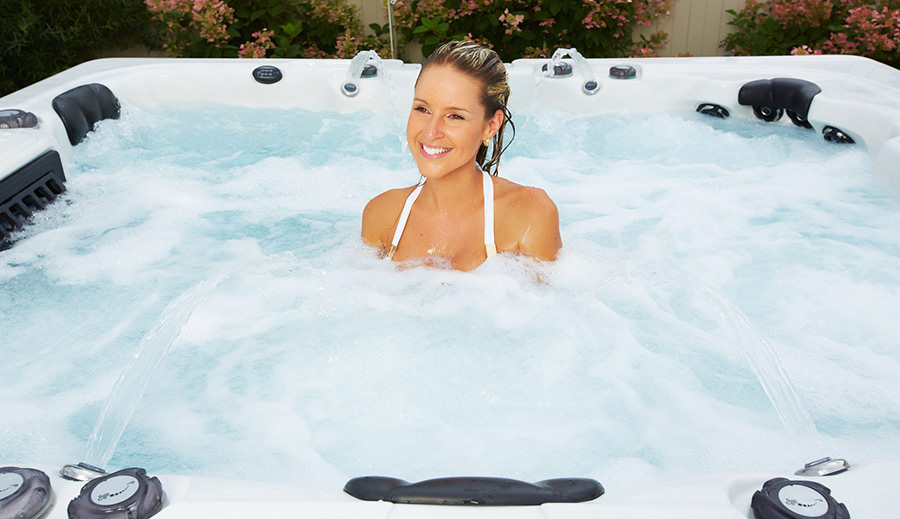
What’s the difference between a cheap and an expensive hot tub?
Size of the hot tub – Unsurprisingly, the bigger the hot tub the more expensive it will be. This makes sense as larger hot tubs use more materials to manufacture, have more jets, need stronger pumps and need bigger filtration systems
Hot tub features – High-end hot tubs will come with a variety of features maybe including lights, waterfalls and possibly audio entertainment. Underneath the hood, a high-end hot tub will have state-of-the-art controls and power for pumping and filtration systems that keep the water clear of a longer and mean that you have
Hot tub design – The higher up the price range you go the more aesthetically pleasing your hot tub will probably be. There will be much more focus on using pleasing colors and textures in the construction of the hot tub. There might be interior or exterior lighting features and the controls will be economically and intuitively designed as well. On a more practical level in a cheaper hot
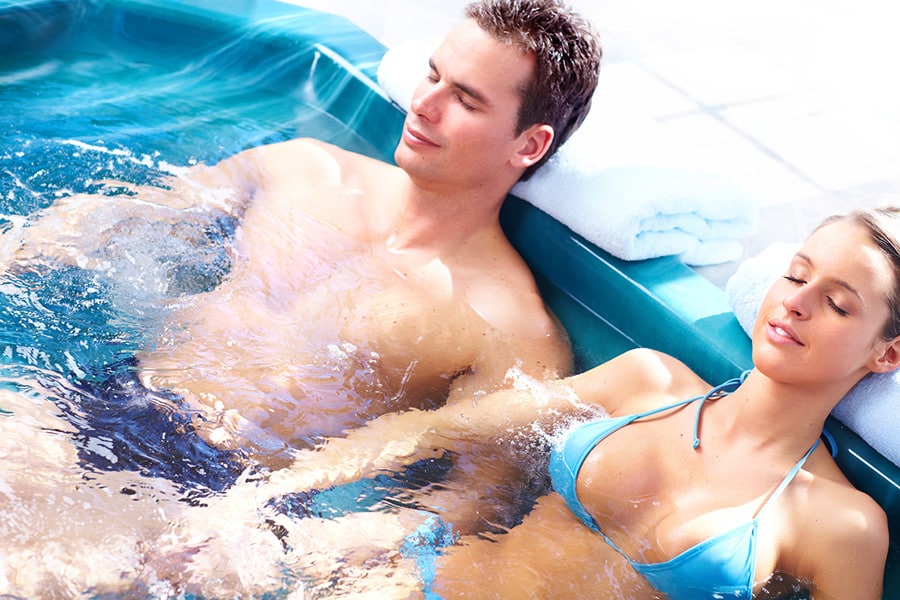
Hot tub materials and workmanship – It can be very difficult to assess the quality of the materials that the hot tub is made from and the workmanship by just looking at it. Obviously good materials and workmanship will mean that the hot tub last significantly longer and will need fewer repairs over it’s lifetime. Often better quality components will be easier to maintain as well and a high quality hot tub will stay clean longer and be easier to clean when it does get dirty. You can’t guarantee good workmanship and materials by spending more but the chances are, that if you by a well respected and recognised brand from a reputable dealer with a long warranty, that you will be buying a high quality hot tub that will give many years of reliable service.
Hot tub warranty – A good quality hot tub should come with a warranty for between 5 and 10 years which will give peace of mind should anything go wrong. It also gives you the sense that, if the hot tub is guaranteed to work properly for ten years, that it should reasonably be expected to go on beyond this date as well. More expensive hot tub packages will come with installation and service programmes built in making it as easy as possible to keep your hot tub in tip top working condition. Cheaper hot tubs will have a limited warranty and also a limited amount of after sales back up. You could be landed with expensive repairs and, if you are unlucky, a hot tub that is difficult to find spare parts for. I guess the bottom line is that, if your hot tub is out of action and needs repairing or needs a lot of regular expensive maintenance, then you are going to be less inclined to use it. It’s a difficult equation to balance out but in many ways, in an ideal world, it makes much more sense to buy a more expensive hot tub where you know that you will get many years of
Hot tub energy efficiency – Energy efficiency is a big deal for a lot of hot tub owners and, if you go on any hot tub forum or Facebook group you will constantly see people comparing and worrying about electricity usage. The fact is that a cheap hot tub will be poorly insulated, will use less energy efficient components and could cost up to $100 per month in electricity. Better quality hot tubs with energy efficient features and

How long should a hot tub last?
It’s difficult to give a completely accurate idea of how long a hot tub should last because it depends on a large number of variable factors. Obviously how often the hot tub is used makes a big difference as does how well the hot tub is maintained. However, the most important part of the equation is the quality of the hot tub itself. As a general rule lower end hot tubs are expected to last around 5 years or so. Mid-range hot tubs last around 10 years but you can get 20 years or even longer service out of a high quality premium hot tub.
Other hot tub costs
Apart from the cost of buying the actual hot tub
Before your hot tub arrives you need to have a firm base to stand it on. This might be a solid terrace, patio or a gravel bed. You might already have a suitable place or you might need to build something specific to put your hot tub on. Depending on the type of weather where you live, you might want to put a permanent structure over the hot tub as well – maybe a gazebo or sun shelter. All of these things can add a significant extra cost to the overall project. You will also need an electricity supply outside for your hot tub and this will most likely have to be installed by a qualified electrician. Again, check the price and factor into the overall cost.
There will also be the ongoing costs of chemicals and filters. You could have 2 or 3 filters to replace every 3 months and these could cost between $30 and $50 each. It’s worth checking with the manufacturer of the hot tub you are considering buying to make sure that you are clear about how much this ongoing financial commitment will be. You also need to add to this the cost of chemicals which, depending on how much you use the hot tub, could be as much as $50 per month.

Hot tubs over time – assessing total value and running costs
So you now know how much a hot tub costs to both purchase and also how much it costs to run on an ongoing basis. T
If you really can’t afford to pay out upfront and have absolutely no flexibility then the only course of action is to buy one of the entry-level hot tubs. You will pay significantly more each month in electricity and you also need to factor in the cost of chemicals and filters to make sure that you can afford to run it. But if this is the only way that you can afford a hot tub then so be it. The chances are that it will probably wear out in around 5 years time, but your financial position may be very different then and will maybe allow the purchase of a better quality hot tub then.
If you have some flexibility in terms of paying an upfront cost then you need to think very carefully. The temptation will be to purchase a good looking all singing and dancing hot tub in the lower part of the mid-range spectrum. It might well look fantastic and seem to have great features but the build quality and the insulation is likely to be compromised and it will probably cost you a significant amount of money per month to run and may last only 5 years or so.
As an example, let’s assume that you spend $5,000 on a hot tub, it lasts for 5 years and costs you $100 per month to run. This seems like a huge amount of electricity but it is certainly not uncommon for people to report cheaper hot tubs costing this amount each month. Total cost of ownership would be $11,000 over the 5 years and the yearly running cost $2,200
Interestingly, even if you bought an absolute bargain basement hot tub for $3,000 and had the same running costs for 5 years there is only a minimal difference with the total cost of ownership over the five years being $9,000 and the yearly running cost being $1800
Now let’s look at the possibility of spending $10,000 on a much higher quality hot tub which should last for 10 years or more and be significantly more economical. A well insulated hot tub should on average cost roughly $1 a day to run so let’s use the figure of $30 per month over 10 years. That equates to a total cost of ownership over 10 years of $13,600 and a yearly cost of $1360.
Taking this even further; if you spent say $15,000 on a hot tub that you could reasonably expect to last for 20 years and that similarly cost £30 per month to run, then your yearly running cost
So broadly speaking a high-end luxury hot tub hot tub costing $15,000 will cost $1,000 per year less to run over
It seems to me that the best bet is to either spend as little as you can on a bargain basement hot tub and expect it to cost you quite a lot per month or to literally go all out and spend as much as possible upfront with a view to saving on a monthly basis over the lifetime of the hot tub. I don’t think it’s a great idea to go for the middle ground where it might be possible to accidentally buy a hot tub that costs quite a lot upfront yet still costs a lot in energy costs per month as well. If you are dead set on buying a hot tub at this level you really need to do your homework very carefully and compare specifications between different models really thoroughly.
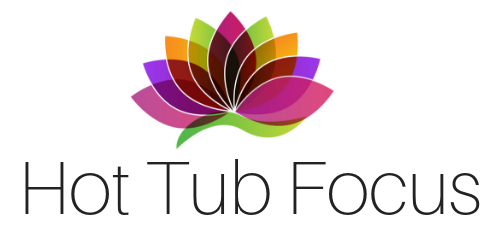

Comments
It’s really great that you discussed that the best hot tubs would not only last more than 20 years but would also come with energy-efficient features and high-quality insulation to lower your utility bills. This is just the sort of savings that my grandparents would love should they get a big and smart hot tub for their mountainside resort. Frequent hot tub soaks would surely be therapeutic for their brittle bones, aching muscles, and tired feet and back.